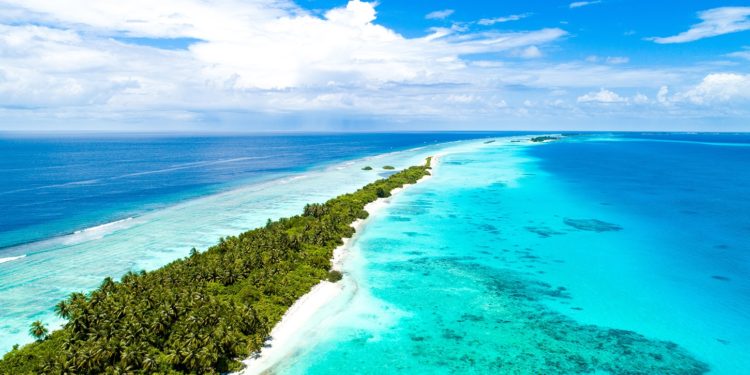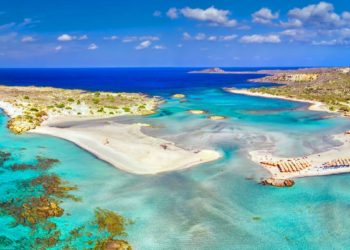But going further afield is more complicated due to dry and rainy seasons. We show the best travel months for the most popular long-haul destinations – from Thailand to Dubai.
Many people dream of sun, beach and t-shirt weather beyond our summer months. Outside of Europe, these conditions are guaranteed in many beautiful places. But in which months is there the perfect climate for which long-distance destination? As we travel from Turkey to the tropics, we highlight the best months for nine of the most popular holiday destinations.
Turkey: Beach holiday from May to October
Three coasts, three different climates: Turkey’s most popular bathing destinations include the Turkish Aegean with holiday resorts such as Izmir, Bodrum and Marmaris, the Turkish Riviera, i.e. the southern coast on the Mediterranean where Antalya, Belek and Side are located, and the Black Sea coast in the north. The Aegean coast in the west of the country has a Mediterranean climate.
That means: wonderfully warm summers and mild but rainy winters. The best travel time here is from May to October, whereby the water temperatures can be surprisingly fresh at almost 20 degrees until June. Mild winters and hot summers prevail on the subsequent 230 km long Riviera. Perfect bathing weather lures there in the spring and autumn months. In midsummer it can get very hot with temperatures around 40 degrees.
On the Black Sea coast, the oceanic climate dominates, with cold, wet winters and warm, humid summer months. From the end of May to October, the inland sea has wonderful beach weather, with occasional warm rain showers from June to September.
United Arab Emirates with Dubai: heat from November to April
Plenty of sun, endless sandy beaches with a bath-tub-warm sea and many unusual attractions: The United Arab Emirates (UAE) score points with vacationers because they can be reached quickly in a good six hours by plane and have an average temperature of 27 degrees in winter. Winter refugees find fantastic climatic conditions in the seven Emirates from November to April: eight to ten hours of sun, cooling down to 15 degrees at night and water temperatures between 22 degrees (January) and 30 degrees (October).
The most popular are Abu Dhabi, the capital of the UAE, Dubai with its artificial islands and the two lesser-known emirates Ras Al Khaimah and Sharjah. The latter is considered an insider tip for beach vacationers. Because the prices in the small emirate are significantly cheaper than in Dubai or Abu Dhabi. The miles of beach paradises with powdered sugar sand, palm trees and turquoise sea lie on two coasts, between the Persian Gulf to the west and the Gulf of Oman to the east.
In summer, however, the UAE is not recommended, because the heat from May to September feels unbearable for many – temperatures up to 45 degrees with around 50 percent humidity.
Dominican Republic: Dream vacation in the tropics from November to May
The Dominican Republic lies between the Atlantic and the Caribbean and has been one of the most popular winter escape destinations for Germans for many years. In a good 10 flight hours you can reach the island with its tropical climate, which stands for year-round warmth on the water (26 degrees) and on land (25 degrees), palm trees, white sandy beaches, jungles, mountains up to 3000 meters high and colonial cities.
The best travel time is from December to May, although there are clear differences along the 1600 km long coast. Reason are the high mountains inland. The south of the island is in its rain shadow, so it’s hotter and drier than the north. That means: The best travel months for the south coast are from November to April, for the north from May to October.
The rainy season brings an average of twelve rainy days per month in the north from November to January, and around eleven in the south from May to November. The hurricane season is less attractive, when from July to October there are often storms with days of rain and strong winds.
Maldives: Holiday bliss from December to March
Tropically warm climate and constant water temperatures of 27 degrees: The 1200 islands of the Maldives, located at the southern tip of India, are among the most popular travel destinations in the world. The reasons are not only the wonderfully warm weather with daytime temperatures of around 30 degrees with nine hours of sunshine and night values rarely below 25 degrees, but also the snow-white coral beaches, palm trees, turquoise-blue lagoons, atolls to fall in love with and pure luxury.
Here in the Indian Ocean there are only two seasons: dry season and rainy season. The northeast monsoon brings drier and calmer weather from January to April. The wet southwest monsoon from May to October brings the rainy season with precipitation and storms, the sun then shines an average of only 3 to 4 hours a day.
Conclusion: The best travel time is from December to March. In the rainy season from April to October, it rains most in the months of June and July.
Mexico: Mega climate from October to May
Due to its north-south extent of more than 3000 kilometers, coasts on the Atlantic, Caribbean and Pacific and 5000 meter high mountains, different climatic conditions prevail in Mexico. In northern Mexico, for example, it is dry and hot with a desert-like climate with little rain but large temperature fluctuations between day and night.
In the middle of the country, the central plateau extends at 1400 to 2300 meters with a temperate spring climate all year round. The capital is also located here, with daytime temperatures between 17 and 30 degrees, although it can cool down considerably in the evenings during the winter months.
The weather is completely different in the south and on the Yucatan Peninsula, where the bathing resorts are located. A warm, tropical climate dominates here with average annual temperatures of 25 degrees. The best travel months extend from October to May. From June to September is the rainy season. There is a risk of tropical cyclones on the Caribbean coast from June to November.
Thailand: Dry season from December to February
Kingdom with two coasts and three seasons: The tropical climate in Thailand is at its best from late November to February with a cool and dry phase. The hot and very humid months of March, April and May follow with extreme temperatures of up to 40 degrees.
Then comes the rainy season from May to October. In this period there can be up to 24 rainy days per month, mostly with only short and heavy showers, but very high humidity. In general, it rains more in the south than in the mountainous north. The reason for the regionally very different conditions are the monsoon winds.
The popular beach holiday destinations in the Gulf of Thailand such as Koh Samui, Ko Phangan or Koh Tao attract visitors with air temperatures of around 26 degrees from December to April. The water temperature is 28 degrees all year round. On the other side, on the Andaman Sea, are the islands of Phuket, Koh Phi Phi and Koh Lanta with their beach paradises. Here the humidity is relatively low from November to February, the temperatures are not yet extremely high and the weather is consistently beautiful with blue skies.
Mauritius: Fantastic weather nine months a year
Island pearl in the southern hemisphere: Mauritius lies 1700 kilometers off the south-east coast of Africa and offers perfect travel weather from September to November and April to June. In these months it is not that hot, relatively dry and it is not the main season (Christmas and Easter holidays). The tropical climate of the island in the Indian Ocean feels very comfortable during this time, also because of the constantly blowing south-east trade winds. The driest month is October.
Not only winter refugees love Mauritius, but also wind and kite surfers, surfers, divers, deep sea fishermen, nature lovers and hikers or beach holidaymakers. From January to March it is hot, muggy and oppressive. The humidity is high and it rains an average of nine days a month. In the warmest month of February, the average temperature is 25 degrees.
Attention: From January to March sporadic cyclones with wind speeds of up to 250 kilometers per hour and torrential rainfall occur.
















